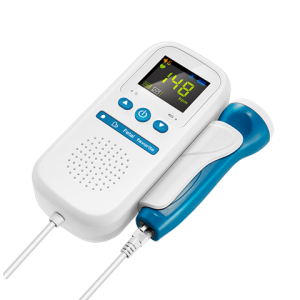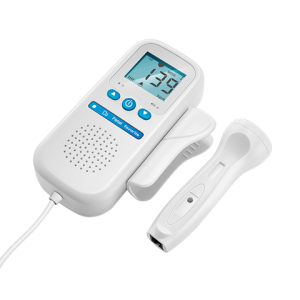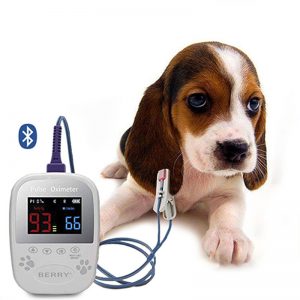Fetal Doppler

Examination time: after 28 weeks of pregnancy
Test object: pregnant women with abnormal / normal fetal movement
Fetal heart rate monitoring
The fetal heart rate is regulated by the sympathetic and parasympathetic nerves. By monitoring the curve of the monitoring graph formed by the changes of the fetal heart at the moment of the signal trace, the reaction of the fetal heart during fetal movement and contraction can be understood to infer whether the fetus is in utero oxygen.
Normal pregnancy begins with fetal heart monitoring once a week from the 37th week of pregnancy. If there are comorbidities or complications, it can be done from the 28th to the 30th week of pregnancy.
It should be noted whether the rhythm of fetal heart sounds is fast or slow, etc. Normal fetal heart sounds are 120 to 160 times / minute. If the fetal heart sounds are more than 160 times / minute or continue for 100 times / minute, it means that the fetus is hypoxic. Timely treatment.
Abnormalities and causes of fetal heart
The normal fetal heart rate is between 120 beats / min and 160 beats / min. If the fetal heart rate lasts more than 10 minutes or is> 160, it indicates that the fetal heart rate is abnormal.
At present, the application of fetal heart rate monitors has become more popular. When fetal heart care is performed, abnormalities in the fetal heart pattern are found and often used to indicate fetal heart abnormalities. In most cases, fetal heart abnormalities represent fetal hypoxia in the uterus. The more severe the fetal heart abnormalities, the more serious the fetal hypoxia, but not all fetal heart abnormalities are caused by hypoxia, except for the above In addition, the condition of the pregnant woman itself also affects the change of the fetal heart rate. For example, the fetal heart rate of a pregnant woman often exceeds 160 beats / min. The pregnant woman has hyperthyroidism. Her heart rate is very fast, and the fetal heart rate often exceeds 160 beats / min. If pregnant women take certain medications, such as Shuchuanning taken during preterm delivery, or atorpine, it can cause the mother and child to have a faster heart rate.
Slow fetal heart rate may be caused by fetal hypoxia, but sometimes pregnant women take certain medications, such as propranolol, which acts on the fetus through the placenta, causing the fetal heart rate to slow down. When the fetal heart rate continues to be slow, pay attention to check whether the fetus may have congenital heart disease. In addition, after more than 40 weeks of pregnancy, due to the development of the fetal nervous system, the fetal heart rate may sometimes be less than 120 times. Therefore, when there is abnormal fetal heart, you need to carefully analyze the situation and make correct judgments and treatments. If there is indeed fetal hypoxia, you should give birth as soon as possible.
The Application Of Fetal Doppler
The Doppler fetal monitor is a non-invasive prenatal monitoring system. It displays the mother’s abdominal contractions and fetal heart rate through waveforms and charts, and can record the data on a band chart recorder. This data can help assess the health of the fetus before delivery (stress test). This device is limited to use by trained medical staff in hospitals, clinics, clinics, and patients’ homes.


The Characteristic Of Fetal Doppler
The monitoring data can be continuously or intermittently recorded on the strip chart recorder according to the requirements of the operator. The recorded information includes chart trend data and monitor software and hardware status information, time and date, patient number, operation setting changes, and event markers for patients and clinicians.

Related Products
A leading hypoxia research laboratory compared accuracy in motion between a itsoug Medical pulse oximeter with itsoug® technology and a competing pulse oximeter. Hypoxia was induced in 13 subjects using an industry standard breathe-down protocol, and motion was generated using a mechanical fixture with tapping and rubbing. SpO2 values were compared to CO-oximetry analysis of arterial blood samples. itsoug precision was ±2.1; competitor technology precision was ±14.4.1








